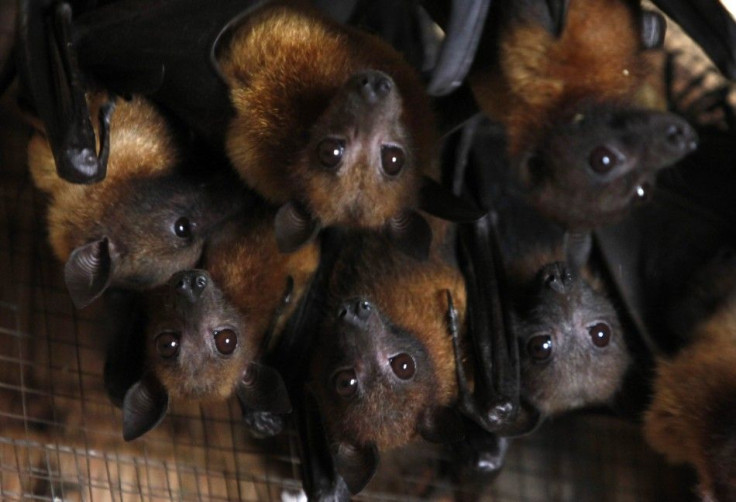White-Nose Syndrome: 'Devastating' Disease Discovered In Endangered Tennessee Bats

(Reuters) - A disease that has killed millions of hibernating bats in the United States has been detected for the first time in endangered gray bats in Tennessee, a finding that government scientists on Tuesday described as devastating.
White-nose syndrome, a disease named for the fungal residue left on the muzzles of infected bats, does not appear to have killed any gray bats so far. But federal biologists said the latest emergence of the disease constitutes a grave threat to the cave-dwelling winged mammals added to the U.S. endangered species list in 1976.
The gray bat is now the second federally protected species, and the seventh species in all, documented with the fungus in 19 states east of the Rocky Mountains. White-nose syndrome, first discovered in New York state in 2006, has killed an estimated 5.5 million bats that hibernate in caves and mines.
The news that another federally endangered bat species, the gray bat, has been confirmed with white-nose syndrome is devastating for anyone who cares about bats and the benefits they provide to people, U.S. Fish and Wildlife Service Director Dan Ashe said in a statement.
Insect-devouring bats save agricultural industries billions of dollars each year in pest-control costs, one reason the sharp drop in bat populations across the Northeast and in mid-Atlantic states is alarming scientists
The disease causes bats to fly outdoors in daylight in winter months, when they should be hibernating and when no insect prey is available.
Gray bats are found in only a few limestone caves in the southeastern United States, where their droppings, called guano, are a critical source of nutrition for other cave-dwelling creatures, said Paul McKenzie, an endangered species coordinator for the Fish and Wildlife Service.
Scientists on Tuesday confirmed the presence of white-nose syndrome in gray bats in two counties in northern Tennessee.
The killer fungus is mostly transmitted from bat to bat, but scientists say it also can be carried by spores that attach to clothes, boots and equipment of humans who explore caves inhabited, or formerly inhabited, by sickened bats.
Government land managers have closed caves and abandoned mines to the public in many states but have been unable to check the spread of the disease.
Environmentalists have pressed the U.S. government to close caves on public lands across the West, where the disease has not yet been detected. Such closures are strongly opposed by caving enthusiasts.
The Center for Biological Diversity on May 16 filed a federal lawsuit against the U.S. Forest Service demanding the agency more fully disclose its plans to protect bats in the Northern Rockies.
That came the same day officials overseeing national forests in Montana and northern Idaho and some grasslands in the Dakotas said they were seeking closures of caves and mines except by permit.
Under the plan, permit holders could explore caves if they agreed to decontamination and other measures designed to protect bats.
(Editing by Steve Gorman and Eric Beech)
© Copyright Thomson Reuters 2024. All rights reserved.






















